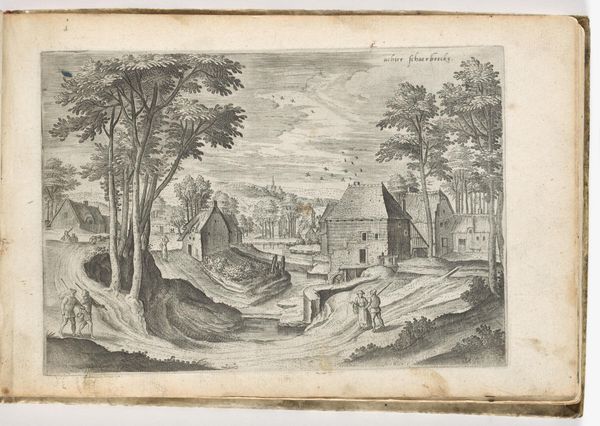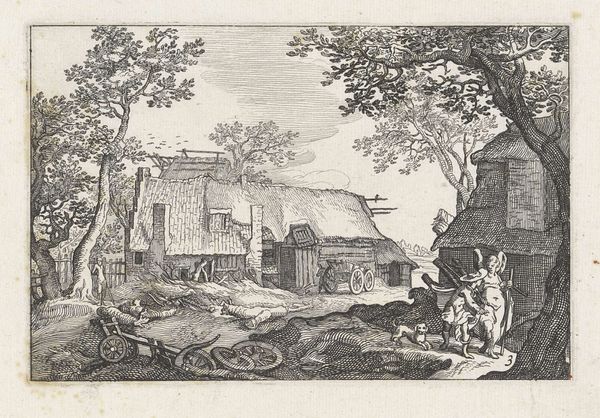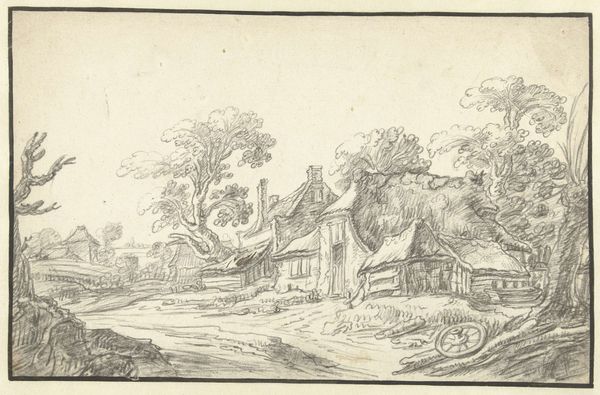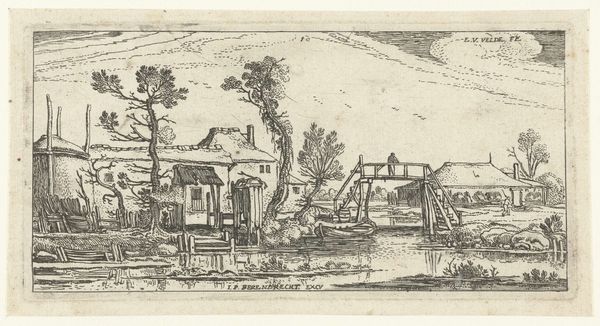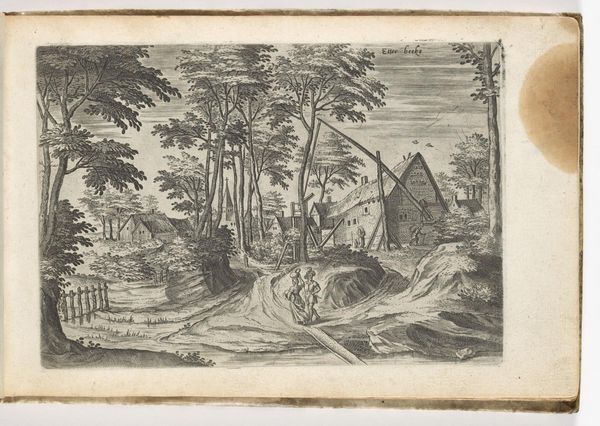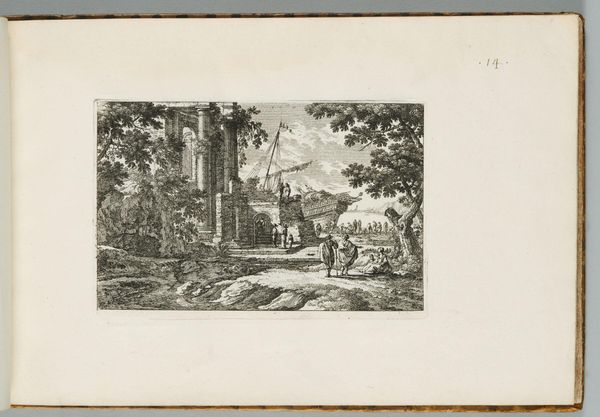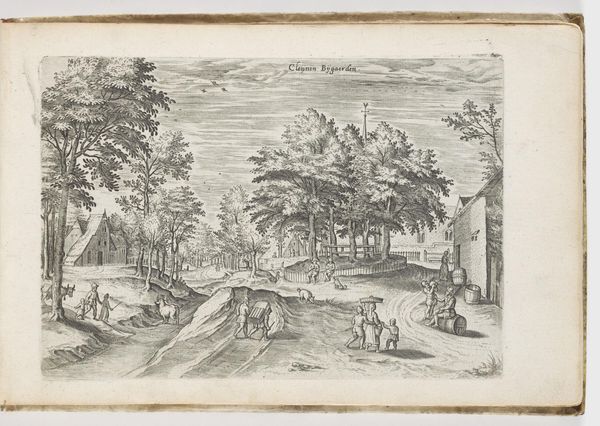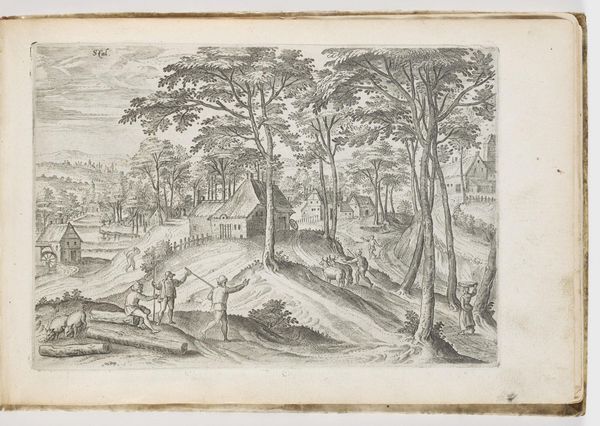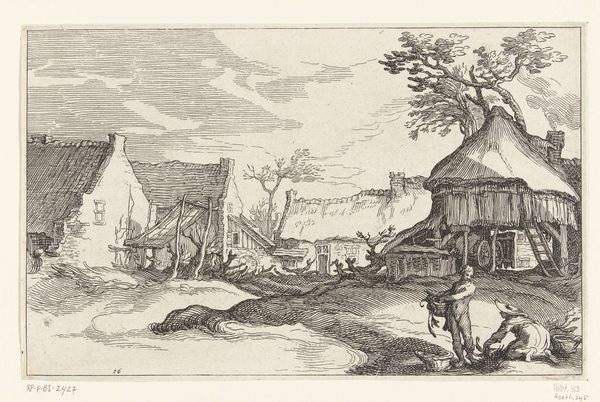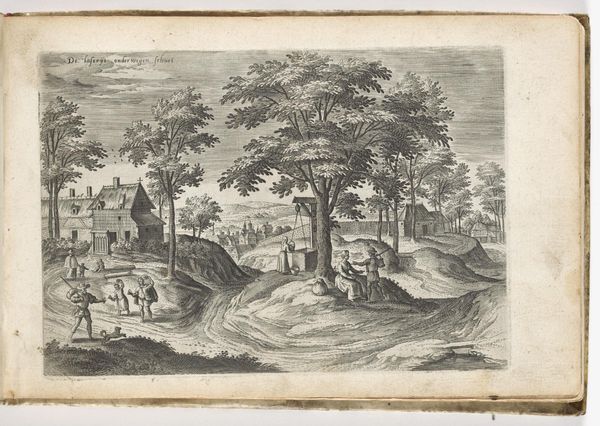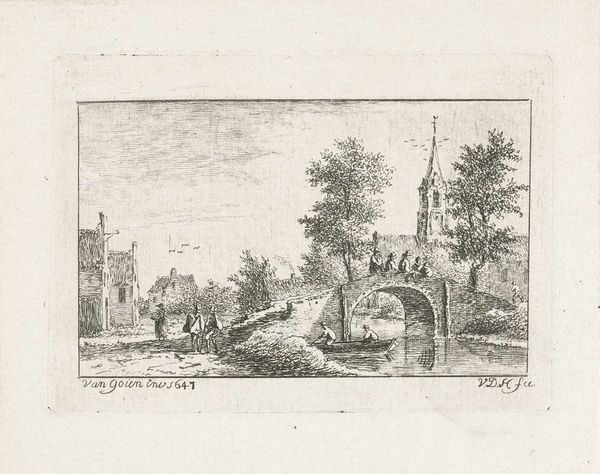
print, etching, engraving
#
dutch-golden-age
# print
#
etching
#
landscape
#
engraving
Dimensions: height 58 mm, width 97 mm
Copyright: Rijks Museum: Open Domain
Curator: Good morning. Editor: So, this is "Landschap met boerderij en schuur op palen bij een water", or "Landscape with Farm and Barn on Stilts by the Water," created sometime between 1610 and 1617 by an anonymous artist. It’s an etching and engraving print at the Rijksmuseum. There’s something so stark and captivating about the scene. The intricate lines and details, and how the architecture is interwoven with the land... What stands out to you when you look at it? Curator: The immediate draw for me is the complex interplay of line and form. Notice the contrast between the precise, almost architectural lines defining the buildings, and the more fluid, organic lines used to depict the trees and the water's edge. How does this juxtaposition contribute to the overall composition, do you think? Editor: Well, the hard, angular lines against the soft, curving lines creates a compelling tension... Curator: Precisely. This tension guides the viewer's eye across the work. The artist meticulously used the etching and engraving to establish depth – see how the lines become finer and less distinct as they recede into the distance, giving a sense of spatial recession. It establishes a clear foreground, middle ground, and background. Editor: Right, the line work does create those distinct spatial relationships and give it such a strong structure. Curator: Consider also the texture achieved through varied line density. Where does the artist employ denser line work, and what effect does this have on our perception of the subject? Editor: Hmm... mostly along the barn; that makes the surface seem so much darker and denser. Looking at the sky and open land, where the lines are sparse, provides so much openness. I never really considered how the artist modulated lines in this way. Curator: Exactly. Paying close attention to these formal qualities—the linework, texture, contrast, and spatial arrangements—helps us appreciate the artist's mastery in translating a landscape into a compelling visual experience. I believe we both observed new characteristics of the work today.
Comments
No comments
Be the first to comment and join the conversation on the ultimate creative platform.
